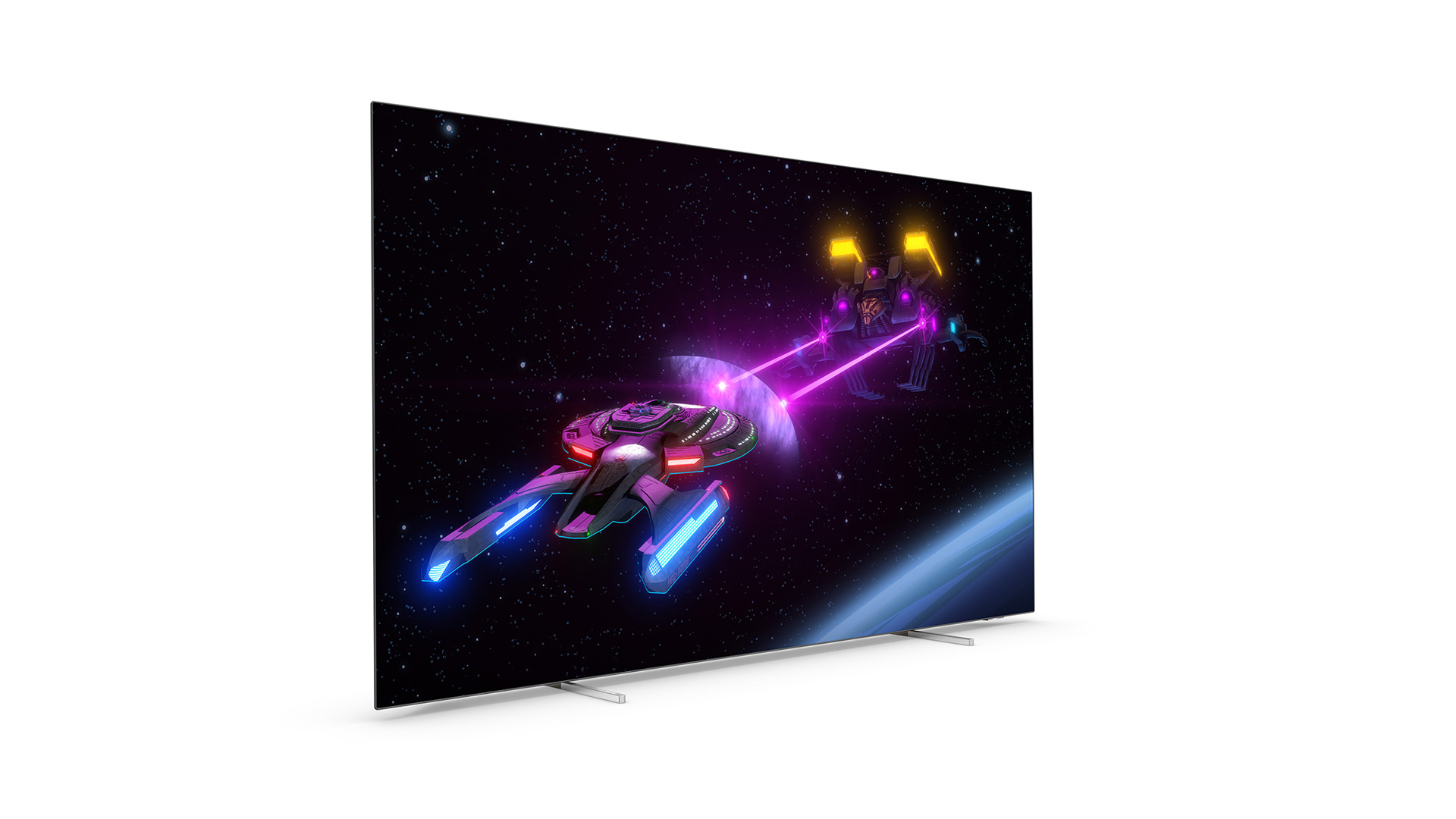What Hi-Fi? Verdict
Some slight usability issues aside, the Philips 65OLED806 is flabbergastingly good
Pros
- +
Exceptionally sharp and punchy
- +
Full HDMI 2.1 feature set
- +
Supports all HDR formats
Cons
- -
Some odd default settings
Why you can trust What Hi-Fi?
Philips is a bit of an enigma, particularly when it comes to TVs. It works to its own schedule, releasing the first of its annual models after most brands have a whole range in shops; it has an idiosyncratic way with picture settings and presets; and its TVs have LEDs on the rear that extend the on-screen action onto the wall around the set in the form of coloured light.
Enigmatic it might be, but it’s an approach that has produced results in the past, most notably in 2020, when a Philips OLED TV took What Hi-Fi? Awards at two different sizes. The OLED806, reviewed here in 65-inch guise, is the replacement for that Award-winning TV, and it builds upon its success in deeply impressive fashion.
Price
The Philips 65OLED806 launched at a price of £2299. Its key rivals are the Sony XR-65A80J (£2199), LG OLED65C1 (£1899), Panasonic TX-65JZ1000 (£2199) and Samsung QE65QN95A (£2099).
If 65 inches isn’t the right size for you, the OLED806 is also available as a 48-inch, 55-inch and 77-inch model. We can’t vouch for those versions without testing them specifically, but OLED TVs do tend to scale up and down well.
Design
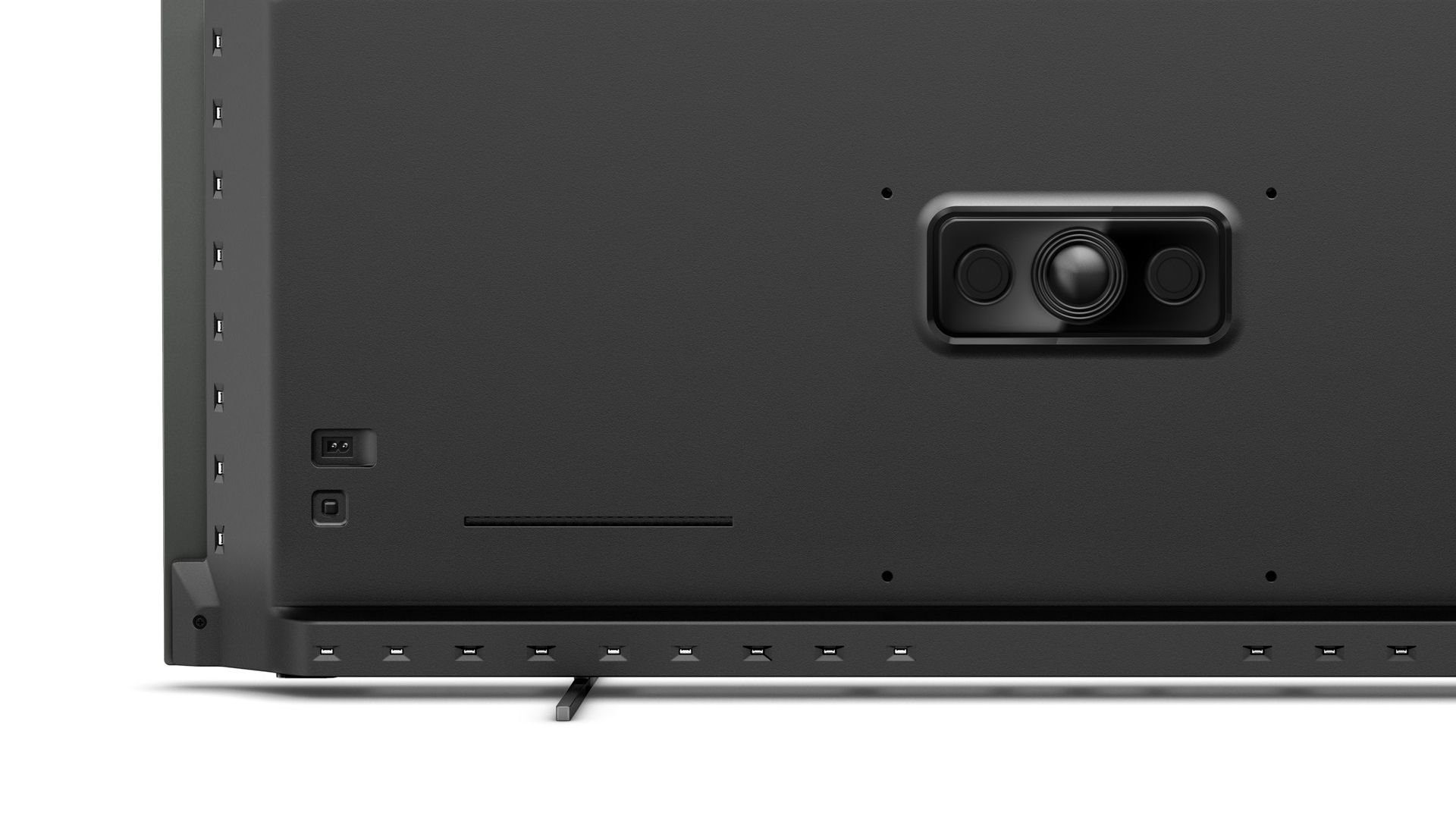
Perhaps unsurprisingly, the OLED806 doesn’t differ much to the outgoing OLED805 in terms of design. Viewed straight-on, it’s the same combination of pitch black screen surrounded by very thin black bezels and an even thinner silver accent. There’s a small IR receiver unit that interrupts the bottom edge on the right-hand side, but that’s the only blemish on an otherwise perfect rectangle – assuming you’re wall-mounting. If you’re not, then you’ll be using the two dainty feet, each of which is, rather ingeniously, half bright silver and half dark silver, so you can choose which finish is visible by simply mounting them one way or the other.
Viewed from the side, the Philips has the usual combination of super-slim panel section and thicker plastic enclosure that houses the connections, processing hardware and speakers. Unlike non-Philips TVs, the OLED806’s plastic portion is ringed by coloured LEDs for the Ambilight system. It actually has four-sided Ambilight, as opposed to the three-sided version of the OLED805, with the extra LEDs being mounted to a lip at the bottom of the set’s rear. This appears to have added an extra centimetre to the depth measurement, with the OLED806 coming in at 6.8cm. For reference, an LG C1 is 4.7cm thick, the Sony A80J is 5.3cm, and a Samsung QN95A measures just 2.6cm.
Last year’s remote control is reused here, albeit with a new, bright silver finish and very minor adjustments to button placement and labelling. It’s a nice zapper overall, with a stylish appearance and satisfying buttons, but those buttons are a little close together and hard to distinguish from one another on touch alone. It is backlit, though, which is hugely useful when you’re going fully cinematic.
Features
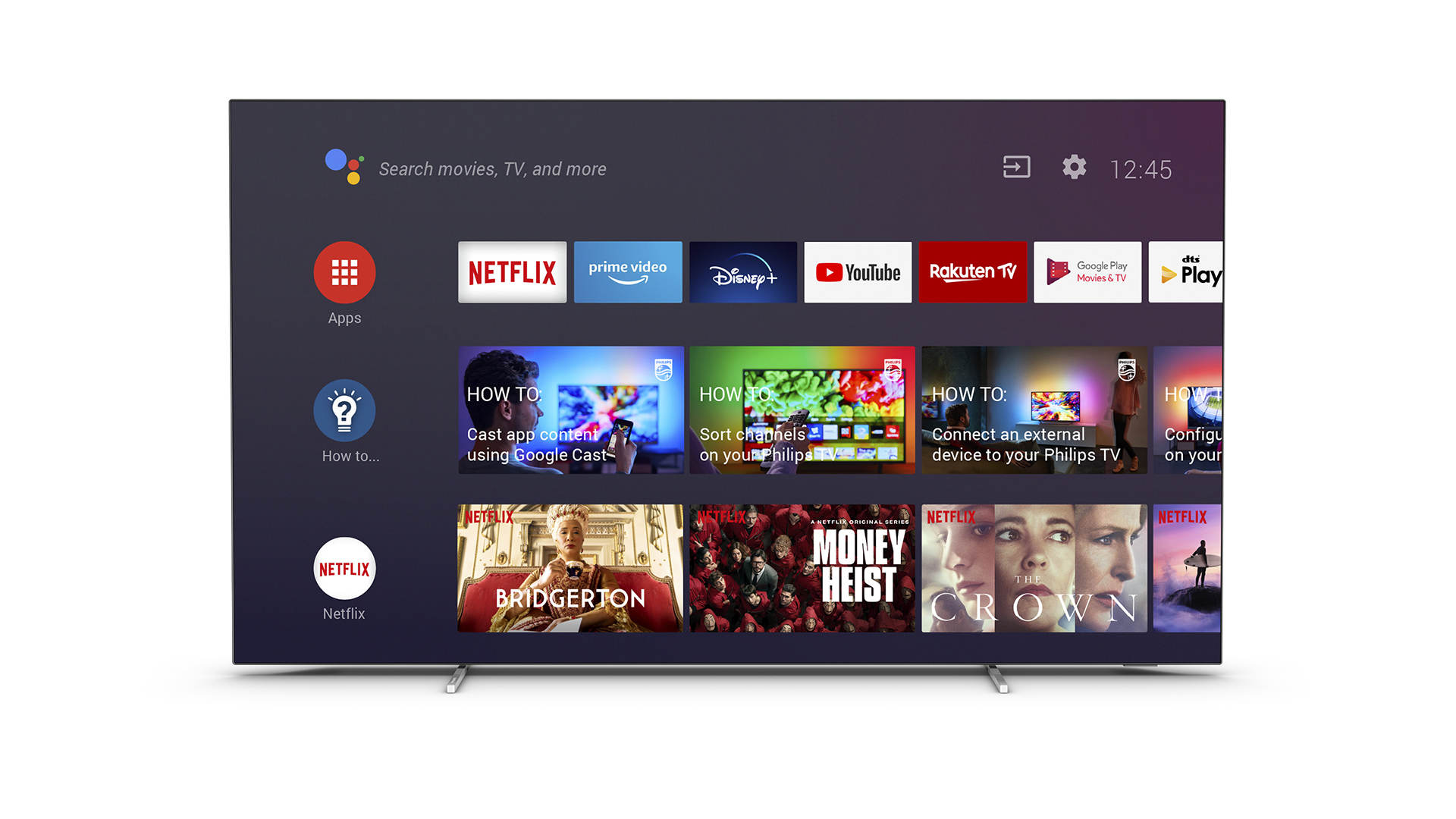
One of the only downsides of the OLED805 was its lack of HDMI 2.1 sockets, and it’s an issue that Philips has addressed for the OLED806, which has two of them. These are full-fat 48Gbps sockets (many rivals use 40Gbps HDMIs, not that it currently makes any practical difference) that support 4K@120Hz, VRR (Variable Refresh Rate) in all of its current forms (G-Sync certification is in progress), and ALLM (Auto Low Latency Mode), making this a very well-specified gaming TV. The very low input lag of around 14ms certainly helps matters, too, as does the HGiG mode, which broadly results in more accurate tone mapping of HDR games.
One thing to bear in mind is that one of the two HDMI 2.1 sockets is also the one that handles eARC (Enhanced Audio Return Channel), which means that if you have two HDMI 2.1 sources (an Xbox Series X and PS5 or a high-end gaming PC), you’re not also going to be able to send sound via eARC to a soundbar or AV amplifier. This is a limitation of all TVs that we’ve tested that have two HDMI 2.1 sockets and, unlike those others, Philips does somewhat mitigate the issue by supporting standard ARC via its other three HDMI sockets. This won’t get you lossless, TrueHD Dolby Atmos, but it will get you Atmos in the Dolby Digital+ format, and we doubt that many will hear much of a difference.
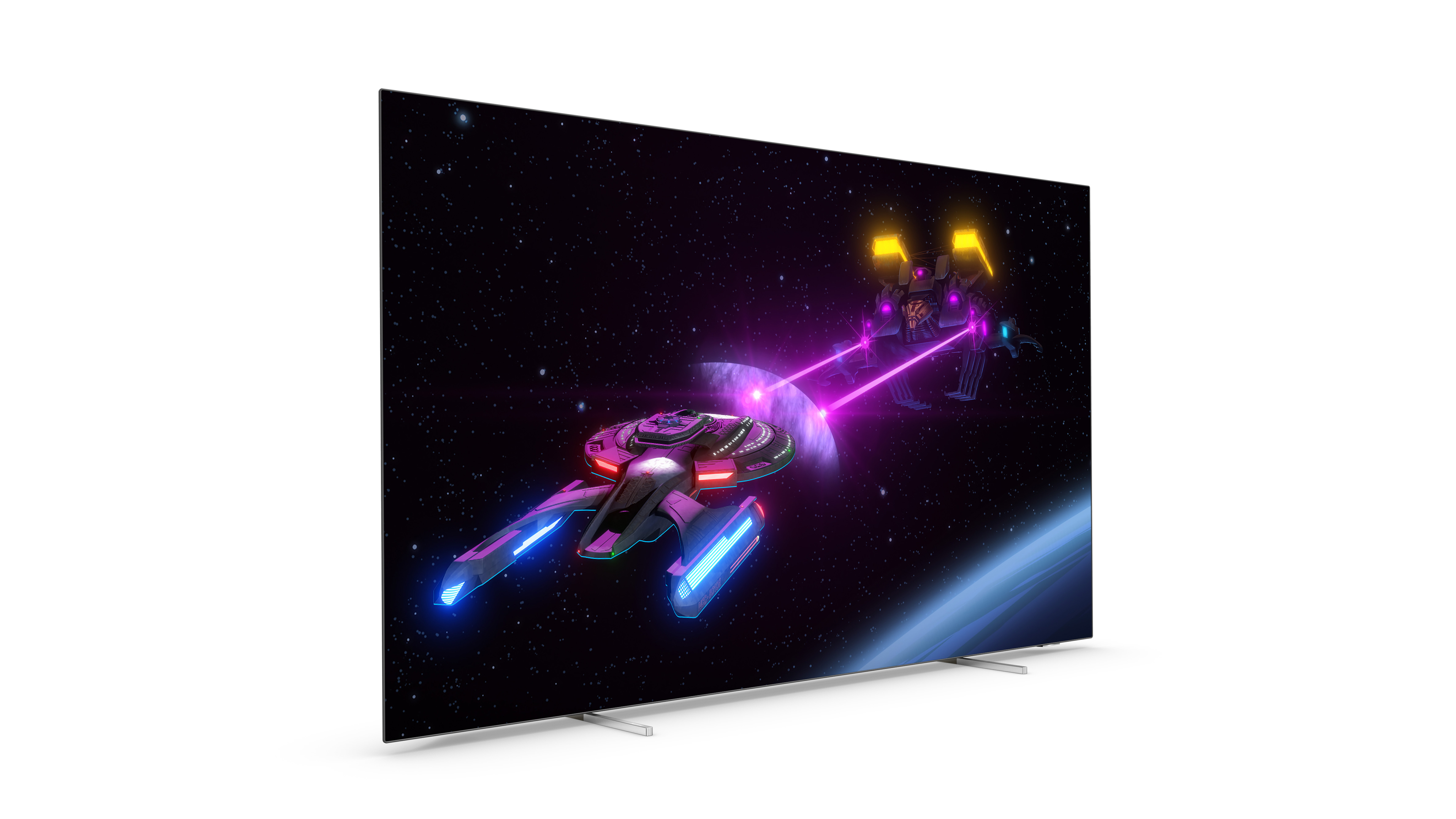
Screen type OLED
Resolution 4K
Operating system Android TV 10
HDR formats HDR10, HDR10+, Dolby Vision, HLG
HDMI x4 (HDMI 2.1 x2)
4K@120Hz Yes
VRR Yes
ALLM Yes
ARC/eARC eARC
Optical out Yes
At the heart of the set is Philips’ new 5th Gen P5 chip, which boasts enhanced AI features over its predecessor. The upgrade is mostly focused around the intelligent identification of the content being played and the adaptation of this to ambient lighting conditions. The idea is that the TV will get the best out of what you’re watching without you having to make any adjustments. In truth, we’re not entirely sold on these specific elements, but the chip is clearly doing an excellent job in other regards, as you’ll see below. It’s also responsible for Philips’ unique anti-burn-in technology, which dims static picture elements such as logos without impacting the rest of the image, and adds a new Fast Motion Clarity feature, which is essentially the Philips take on black frame insertion.
On the HDR front, the OLED806 has pretty much the full house, with HDR10, HLG, HDR10+ and Dolby Vision all supported. HDR10+ Adaptive is on board, too, allowing the TV to automatically adjust HDR10+ content to ambient lighting conditions, and while Dolby Vision IQ isn’t officially supported, Philips says the combination of standard Dolby Vision and its AI-powered light sensor effectively does the same thing.
Philips is sticking with the Android TV 10 platform for its 2021 TVs, rather than opting for the newer Google TV operating system, but many of the latter’s better features have now been added to the former, so having the older OS is no great hardship. It’s very well appointed for apps, too. Netflix, Amazon Prime Video, Apple TV and Disney+ are all present in their full 4K, Dolby Vision and Dolby Atmos glory (Amazon features HDR10+ content as well); Google Play Movies & TV (soon to be simply ‘Google TV’) has 4K Dolby Vision content, too, while Rakuten is in 4K HDR10; you get BBC iPlayer, ITV Hub, All 4 and My5 courtesy of the Freeview Play platform; the integrated BT Sport app will be useful for many; Plex and VLC can handle playback of your own media files; and Spotify, Tidal, Amazon Music and BBC Sounds are all on board. The only real absence of note is Now, and that won’t be a deal-breaker for many.
Picture
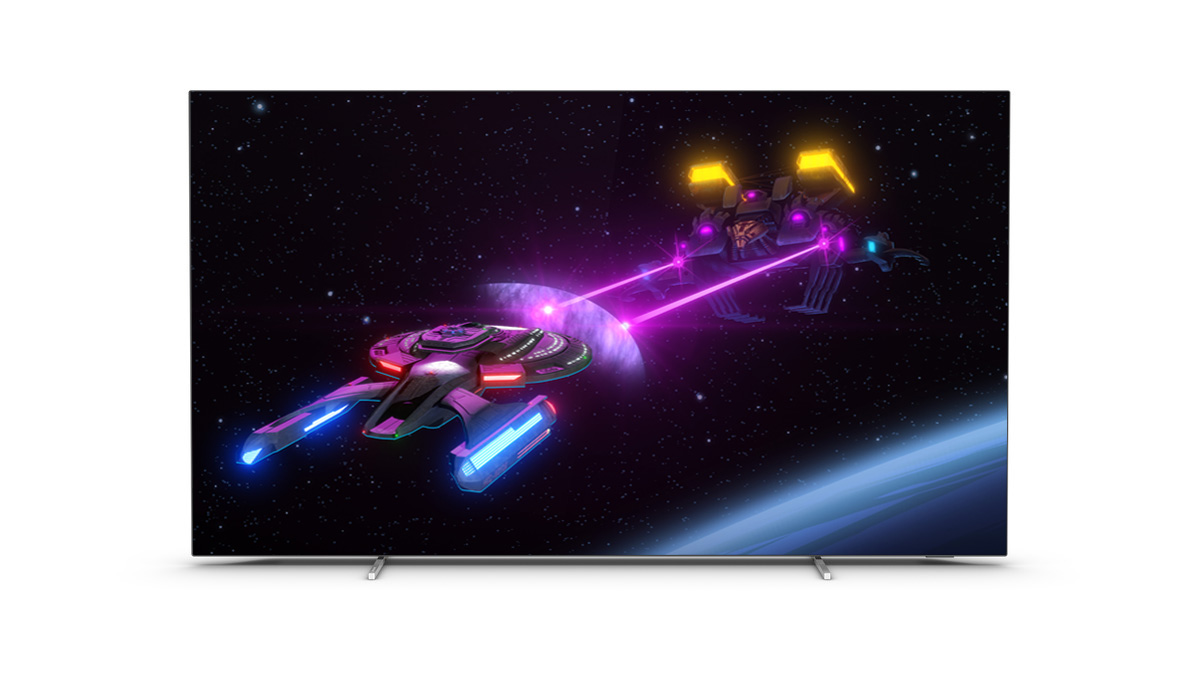
By default, Dolby Vision content triggers the HDR Personal preset, which is miles away from the intention of Dolby Vision. It’s a bizarre approach – some might say a slightly arrogant one – but it’s at least easily solved by manually switching to a more appropriate preset.
That said, Dolby Vision Bright, which is the preset best used for Dolby Vision content when viewing in ambient light, isn’t simply a brighter version of the most accurate Dolby Vision Dark preset, but one with a number of other settings also altered. If you do view Dolby Vision content in a lit room, or you simply enjoy a punchier Dolby Vision delivery (as we do), you’ll need to reduce or turn off these settings to avoid an image that’s overly sharpened – reduce sharpness so it’s at 3 at most, turn off Ultra Resolution and noise reduction, and switch Motion Styles to Movie or Pure Cinema.
Make those adjustments and fire up Our Planet on Netflix and you are in for a jaw-dropping treat. As David Attenborough sets the scene, we see the moon resolved with its lumps, bumps and craters defined in exceptional detail and with palpable three-dimensionality. The light from the sun gleams off the craggy surface in beautiful contrast with the pitch black space beyond, upon which literally millions of stars, many of which are lost to the dark when watching on a rival TV, sparkle brightly. As the Earth comes into view, it’s possible to make out specific continents, despite the great distance, and there’s lovely shading to the bright white cloud formations and vibrant blue oceans. It’s an astonishing image that instantly illustrates the OLED806’s greatest strengths – its sharpness, detail, punch, perfect blacks and vibrant colours.
Of course, this intro to the series is CGI, but the Philips is just as impressive with ‘real’ content. A scene in which a raft of penguins (whoever knew a collective of swimming penguins was called a ‘raft’?) dives beneath the icy ocean’s surface is rendered with exceptional clarity and detail. Every one of the pudgy birds stands out from the water around it thanks to a perfect combination of crisp definition, elegant shading that distinguishes the black-grey colouring on their backs from the deep blue-grey of the sea, and a pure, punchy way with whites that makes their tummies and necks stand out. The bubbles, meanwhile, shine almost as brightly as the stars in the episode’s introduction.
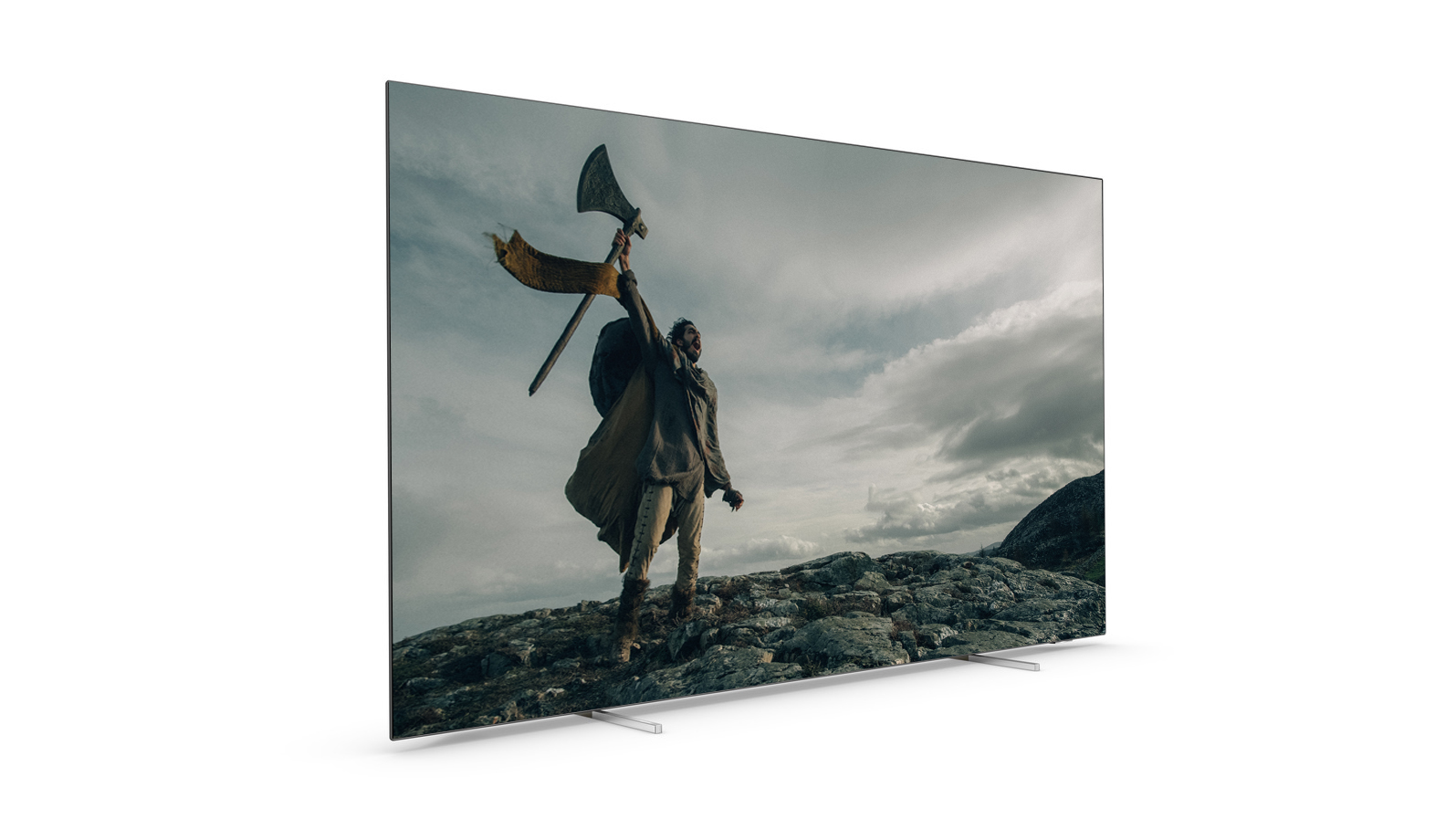
As a camera glides over the snowy surface of Antarctica, it’s obvious that the OLED806 can’t produce the brightness peaks of a flagship LCD TV such as the Samsung QN95A, but it’s a dazzling image by OLED standards, and the detail contained within its highlights combines with stunning contrast and that supreme sharpness to make the icy mountains pop from the screen. It is, in short, stunning, and made all the more so by the lovely Ambilight.
The Philips is just as impressive when playing Interstellar in HDR10, but we again find ourselves having to make more picture adjustments than should really be necessary. In the end, we stick with the HDR Home Cinema preset but reduce Sharpness, turn off Ultra Resolution and Colour Enhancement, switch off the noise reduction features, switch Light Boost to Maximum, HDR Perfect to Adaptive and turn off the Light Sensor. You’ll probably want to change the Motion Styles setting, as the default Standard is great at times but too often looks over-processed. You’re better off selecting Movie or Pure Cinema, depending on taste.
That’s a lot more effort than you have to make to get the best out of most modern OLEDs, but it’s an effort that’s well worth making. As the camera pans across the family farm at the start of Interstellar, individual stalks of corn are distinguishable in the huge field. There’s nuanced variety to the greens in this field, which are different shades to those in the adjacent lawn. Less well sorted TVs would have you believe that they’re practically the same colour.
The scenes in space are predictably spectacular. As the ship approaches the black hole, it’s exquisitely crisply rendered and brilliantly white where the light hits it. The black hole itself is a tantalising, shimmering sphere against the pure black space around it, and the distant, pin-prick stars are pure and bright.
The only slight flaw with the OLED806’s delivery of Interstellar is that it doesn’t suppress the film grain in the way that some other TVs do, even when noise reduction is switched on. One could easily argue, though, that the film grain is part of the presentation, and it’s certainly not something that we find off-putting.
Confronted by our usual motion-handling stress test, Blade Runner 2049, the OLED806 gets far less flustered than its predecessor. In fact, it maintains a grip on K’s car as he flies into LA almost as well as the Sony A80J. Slower pans are handled in smooth and sharp style, too, but there’s no soap opera effect and little to no introduction of digital artefacts. Through the whole, deeply challenging film, there’s just one section that trips up the OLED806’s Movie motion setting, and that’s in a slow, birds-eye pan over LA at the start of chapter two, which is delivered in bizarrely juddery fashion. We failed to recreate the issue with any other content, so we’re happy sticking with the Movie setting, but you can opt for Pure Cinema if you prefer – this reduces the amount of processing, resulting in occasional bits of blur but also completely removing the unusual judder of that specific panning shot.
Switching to Django Unchained in HD and SDR, the OLED806’s settings need toning down once more, but it puts in an excellent performance once that’s done, producing a picture that’s sharp but subtle, vibrant but controlled, punchy but not exaggerated. In the attempted ambush scene, the torches of the masked riders are so bright and rich that you can almost feel the warmth, and they contrast strikingly against the pitch black night sky. Importantly, shadow detail hasn’t been sacrificed for those deep blacks, so you can still see everything you’re supposed to.
Drop right down to the bottom of the resolution ladder with a bit of standard-def from the built-in tuner, and the OLED806 impresses yet again, particularly in terms of punch and sharpness. Some rivals are just slightly cleaner here, but few can match the Philips’ dynamism.
Sound
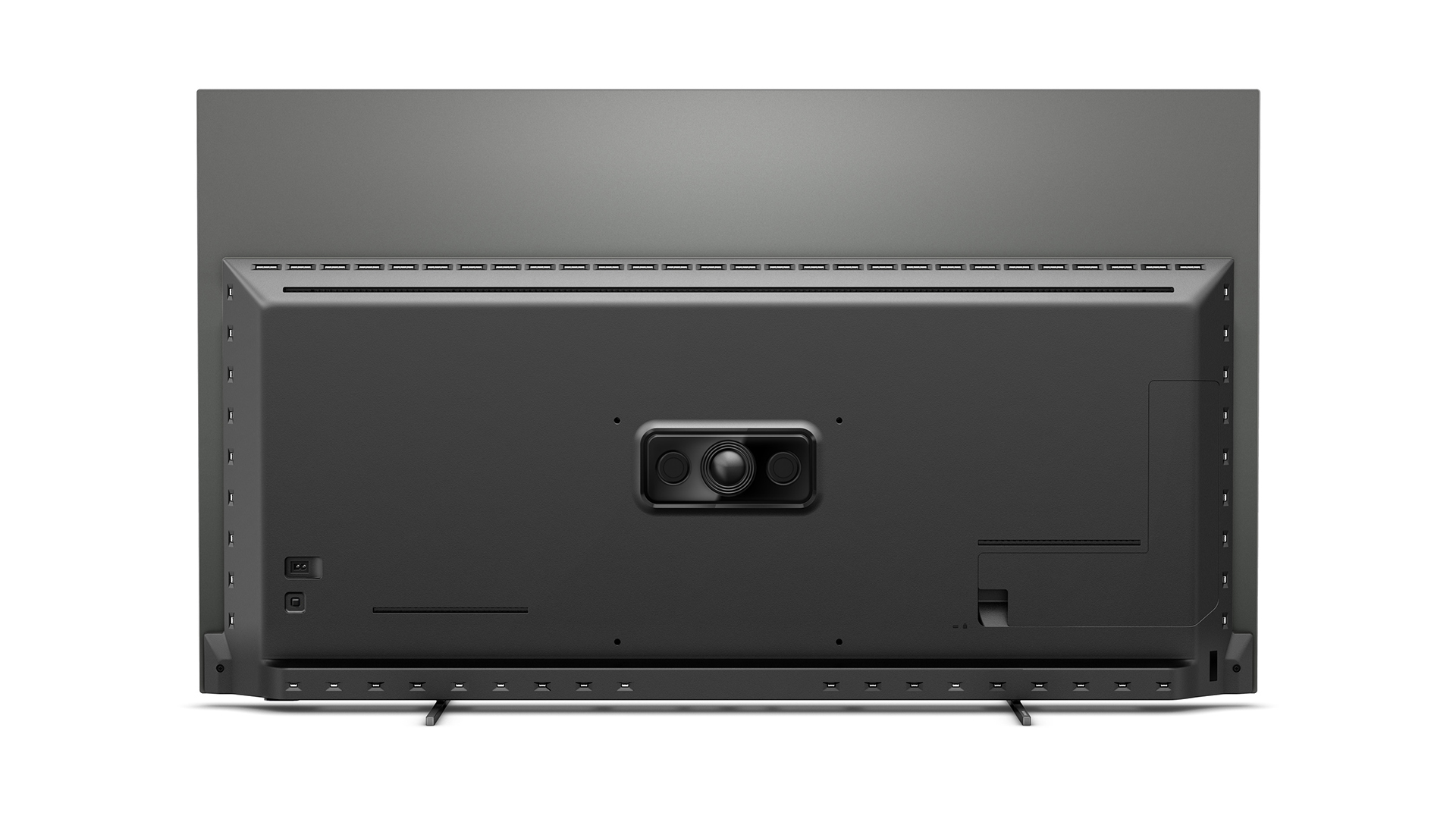
For sound, the best options are the Original and Movie modes. Original is best suited to regular TV content, which it reproduces clearly and faithfully, albeit with a touch of sibilance at the top and a little boominess in the bottom.
Original is a bit too narrow to deliver on a film’s epic scale, though, and this is where Movie comes in. Switch it on and the presentation opens up significantly, spreading sound impressively to the sides and space above the TV. The slight boominess remains, but the general weight and heft to the sound are satisfying, and there’s surprising dynamic headroom, with Blade Runner 2049’s weighty, drum-driven track at the start of chapter two continuing to build long after many similarly priced TVs have hit their peak.
Switching to Movie mode does hamper the directness and projection of dialogue, and the speaker system isn’t quite crisp and clean enough to maintain complete control at particularly cacophonous moments, but for an integrated sound solution at this level, it’s good. You should still budget for a soundbar or home cinema system if you’re able to, though.
Verdict
The Philips 65OLED806 is an absolutely superb TV that performs even better than its Award-winning predecessor while throwing in the next-gen HDMI features that would have put off hardcore gamers last year.
It makes you work harder to get the best out of it than it should, but the effort is more than worth it. There’s not a better TV available at its price.
SCORES
- Picture 5
- Sound 4
- Features 5
MORE:
Looking for the 48-inch version? Here's the Philips 48OLED806 review
Read our LG OLED65C1 review
Also consider the Samsung QE65QN95A
What Hi-Fi?, founded in 1976, is the world's leading independent guide to buying and owning hi-fi and home entertainment products. Our comprehensive tests help you buy the very best for your money, with our advice sections giving you step-by-step information on how to get even more from your music and movies. Everything is tested by our dedicated team of in-house reviewers in our custom-built test rooms in London, Reading and Bath. Our coveted five-star rating and Awards are recognised all over the world as the ultimate seal of approval, so you can buy with absolute confidence.
-
hybridauth_Facebook_10205630355772381 Spectacular picture quality, now with 4 sided ambilight and HDMI 2.1? Shut up and take my money! :)Reply
